It's a Long Way to the Top
To mark the end of 2024 I did something unexpected, and possibly foolhardy. Inspired by a (fitter) friend, I climbed to the top of China's famed Yellow Mountain, Huangshan
Since moving back to China this summer, I’ve been fortunate enough to make several new connections, including my friend Lee (although we have a shared history of early 2000s China media stories, we never actually met at that time). So when he asked if I’d like to go hiking sometime, of course I said yes. When he later mentioned that he was thinking of summiting Huangshan (Yellow Mountain), I said ‘sounds good’, without really putting too much thought in it. When I then got a message saying that we were booked and ready to go, I realized I should probably start actually researching things.
Reaching a maximum height of 1,864 meters, Huangshan is actually a series of peaks spread over an area of 150 square kilometers. It is one of the most famous places in China, its stunning scenery having been praised in poems and paintings for more than 1000 years, with some of the 60,000 stones steps carved into the mountainside around for just as long. Monks were some of the first to reach the top, drawn to build temples by its ‘heavenly’ vistas, and perhaps also to find peace and solitude to pray and reflect.
However, it’s anything but quiet now. Even in the middle of winter, which is when we decided to hike up, crowds were everywhere, and I’m glad we decided to set off on a Friday. At the foot of the mountains, a bus takes you to the main entrance, from where you can catch the cablecar or start on the steps. We of course had chosen the latter, and so began our climb. It may be the topography, but it does seem that the Chinese often like to take the direct approach when it comes to building paths. For some two and half hours, the relentless stairs continued upwards. Even before the halfway point, I’d already told Lee to go on ahead and I’d catch up, pausing frequently to take in the vista at viewpoints, but in actual fact taking the much needed time to catch my breath.
“You don’t need to see any more mountains after seeing ‘the Five Mountains’, and you don’t need to see the other four mountains after seeing Huangshan”
Xu Xiake, Ming Dynasty Chinese geologist
Finally I reached the top, where my climbing partner sat casually waiting. Hordes of people crowded around the official viewpoint, most of them having come via cablecar. We sipped a quick photo and then moved off to explore the different-shaped rocks and trees, which the summit is famous for. Such as Greeting Guest Pine, a tree that suggests a man holding out his hands in greeting; Monkey Watching the Sea, which, yes, does look like a macaque staring out meditatively over the epic scenery; or Flying-Over Rock, a 12 meter high pointed stone that appears on the verge of toppling down the sheer slopes, which Lee flat out refused to go up and see, on the basis that the crowds pushing to see it were just as likely to go flying over the rock face themselves.
By this point we’d been walking for hours and it was starting to get cold. Stumbling onto some much needed bowls of noodles, we wolfed them down and then headed for our hotel for the evening, to spend the night on the mountaintop and then get up to watch the sunrise in the morning. Following the signs for Bright Top, we hit a flight of stairs and fell into our familiar walking pattern - Lee striding on ahead, while I set myself bitesized goals of five steps at a time. After walking much further than I was expecting, I finally tracked him down sitting on a rock, staring out at the scenery, a serene spot that marked the highpoint of our trip, some 1,841 meters up in the sky.
Our digs for the night was the Baiyun (White Cloud) Jiudian, a pleasant enough hotel, though unfortunately our room was on the fifth floor and there was no lift (hooray, more stairs!), though the wooden lined interior did give off suitably alpine vibes. After a filling hotpot dinner, it was up early the next morning to head back up to Bright Top, and witness the sun rising over the ‘Sea of Clouds’. It emerged slowly, first just a bright red line drawn across the horizon, shading into the night sky, moon still visible. After shivering for more than an hour, the sun finally emerged, a burning red hot orb casting light over the mountain peaks, submerged beneath a cloud-filled landscape. It was a magnificent sight, as the 100 other people crowded around fervently agreed.
As the sun rose over the day, I looked around for Lee but he had long vanished "(“Too cold!” I read in a message), so I snapped a photo of the official Bright Top height sign (avoiding the lengthy queue for a photo), and met him back at the hotel for breakfast. Today’s we were hiking down via the other staircase. Known as the ‘front stairs’, the route is actually a fair bit further, which is why we’d chose to go down this set. It quickly emerged that being on Huangshan on a weekend was a bad idea, having to squeeze our way beyond hundreds of day trippers, who had all caught the cable car up. Arriving at the upper terminus filled with a sea of people, we could barely see the way down, but were relieved that at least from now, the path would quieten. After all, who would want to hike up four hours of steep stairs? Of course, I was quite badly wrong.
We passed all sorts of people coming up as we were headed down: young couples who looked more dressed for the mall than the hills, wicker sedan chair carriers looking for passengers, men in dress shoes and suits carrying plastic shopping bags, and even two year old children determined to make it to the top (but destined to be carried much of the way by their fathers). Then there were the poor porters, weighed down by a heavy load spread across a bamboo pole in the same way their counterparts have probably done for hundreds of years, bringing supplies and construction materials to the places the cable cars can’t reach. Interestingly, we had seen their replacements from up top, a stream of huge drones buzzing by, which were already taking on some weighty loads.
It was a heavy thought somewhat lightened by all the people we met on the way who, though most had limited English, were of course curious to see the laowai, and find out where we were from, from the friendly “Hello!” shyly said by little children, to the raucous “Hey bro!” and “Hey guy!”, which the groups of teenage boys found hilarious.
As we neared the end of the journey, my muscles started to tighten, probably in the happy realization they were soon going to have a break from all the walking, and we finally emerged at the foot of the stairs, after a 3 and a half hour climb down. Gazing up at the peaks, it was hard to believe we’d only recently been at the top, or that our journey had only started the morning before. It was mostly in contemplative silence that we sat on the bus taking us back to the park’s main entrance, soaking in the steep curves of the mountain road, and reflecting on our remarkable - if too short - journey.
After all, it’s a long way to the top - if you wanna rock and roll.





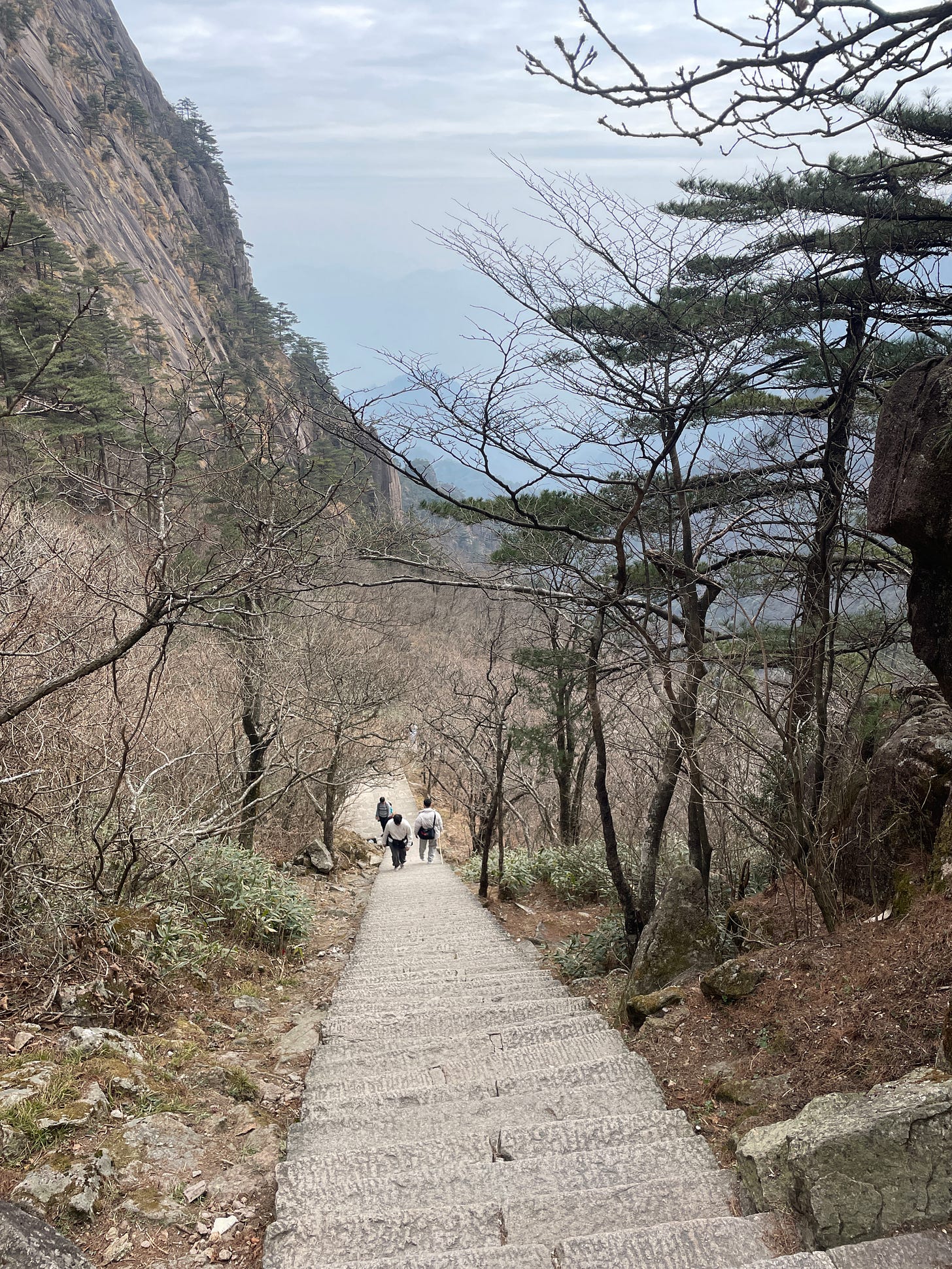

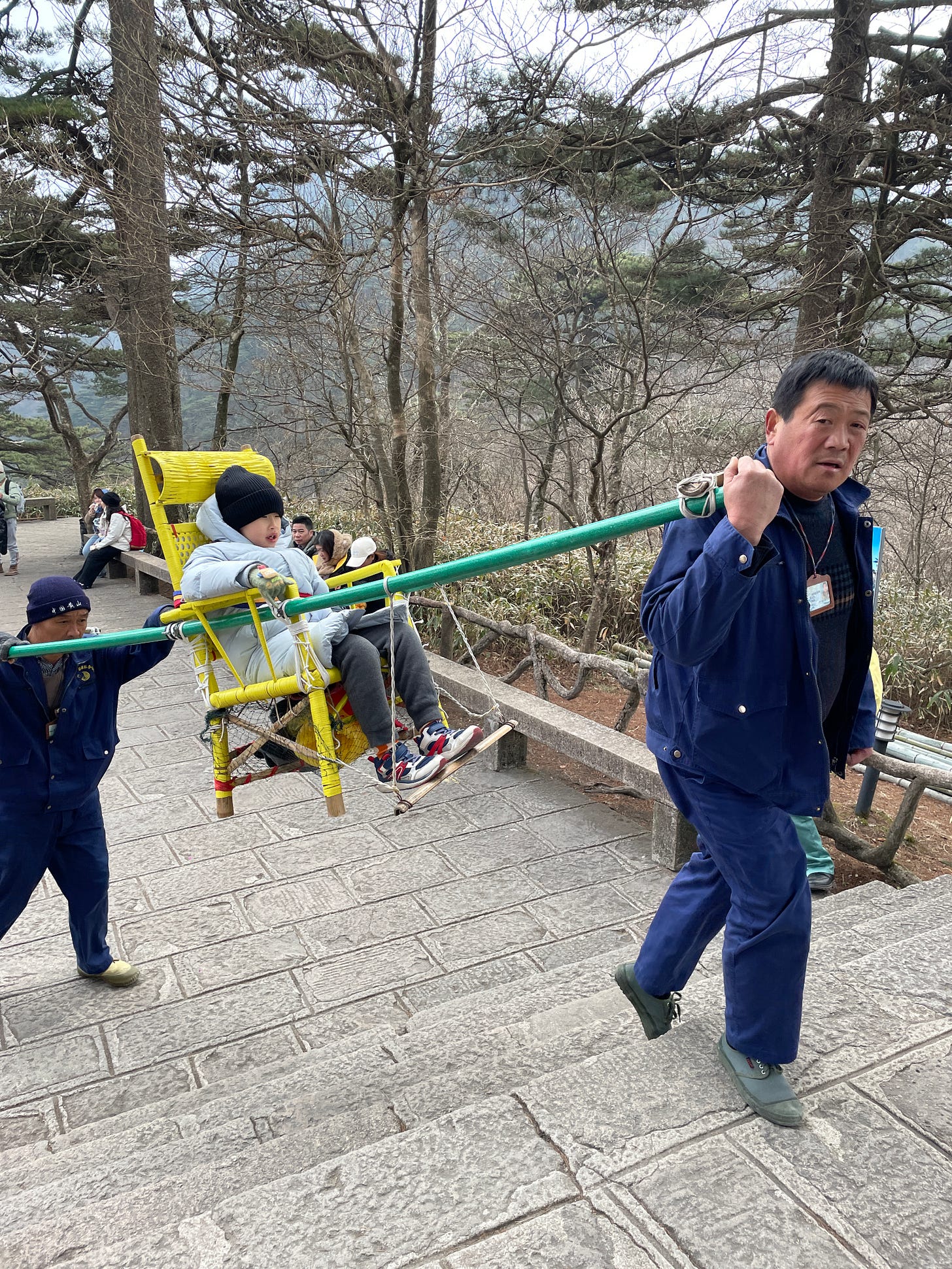

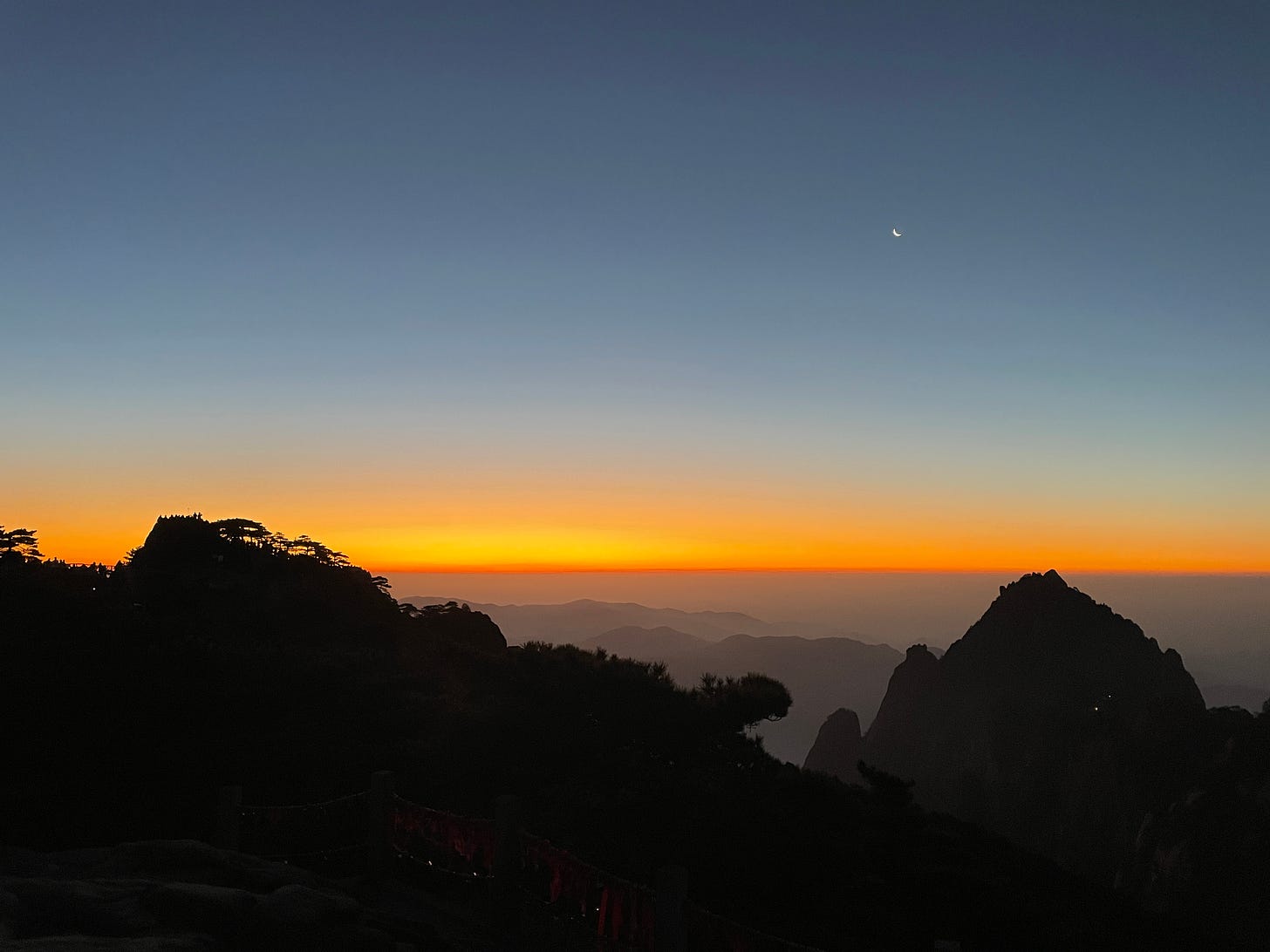
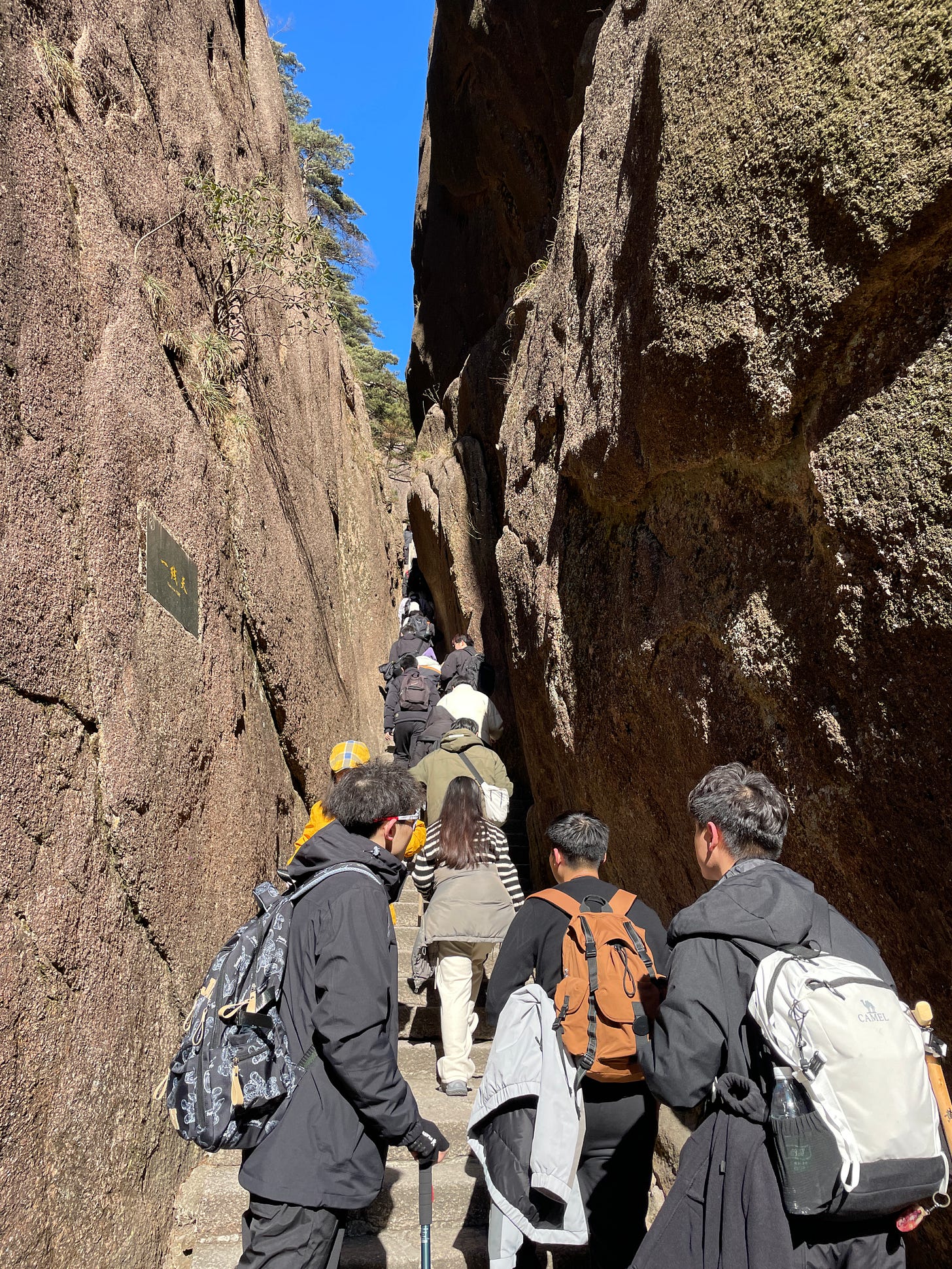
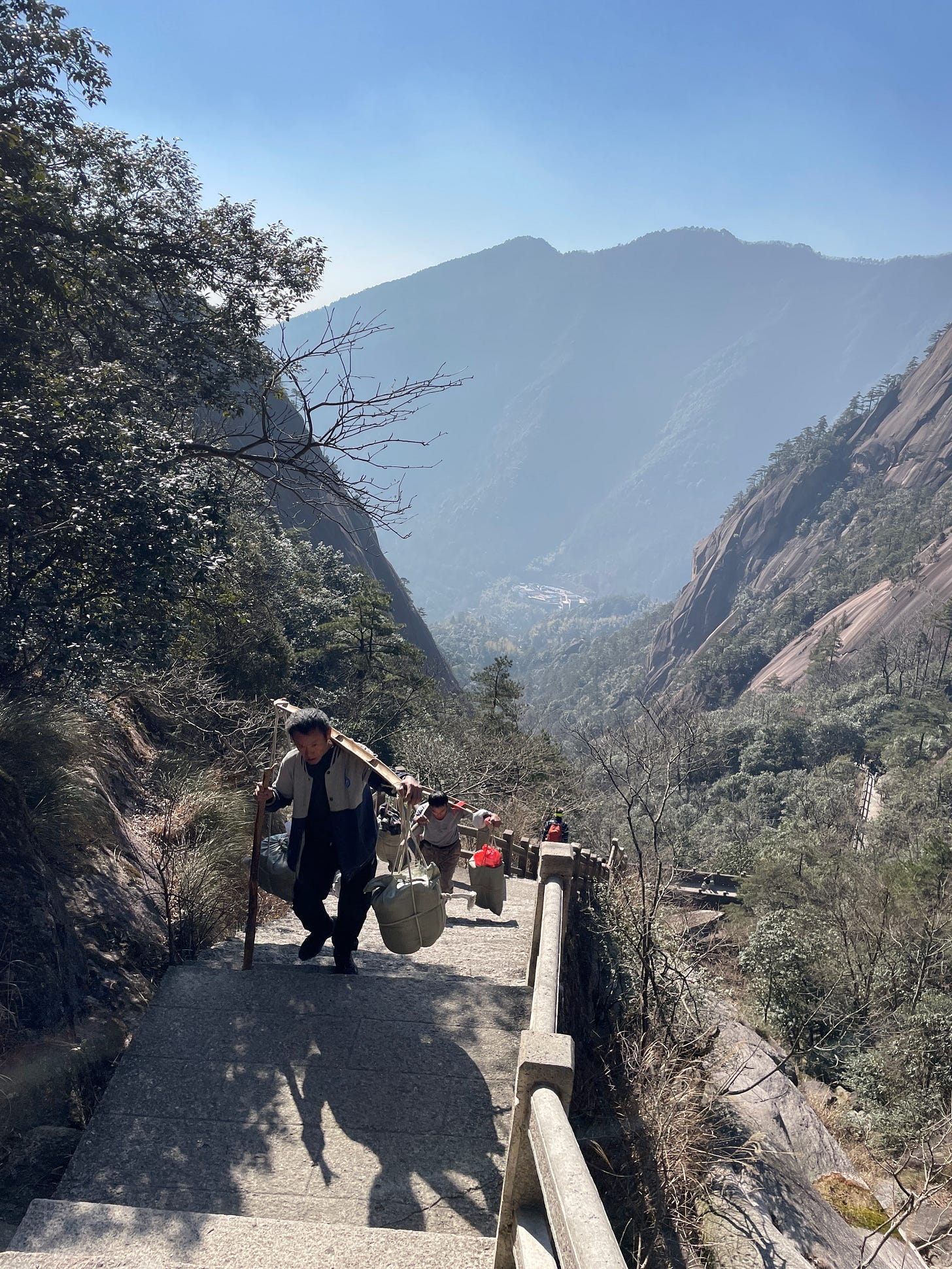
A trick I learned is to climb the second-highest mountain in the area. Usually it is virgin, deserted, no people and nature surrounds you. Often there is no infrastructure though.
I climbed it in 2012 and the memories are still vivid (my knees have only recently forgiven me) . I was the only laowai in our small group and made to feel quite special , which is an endearing attribute of Chinese people. Three elderly ladies dressed as if to do the daily shop frequently put the rest of us to shame by constantly chattering whilst zipping way ahead and having to await the rest of us several flights up.
The views, the companionship, the physical effort, got to be up there in the top 10 things to experience in China. But oh those endless flights of unforgiving stairs…..